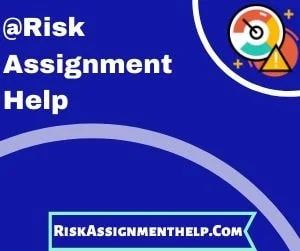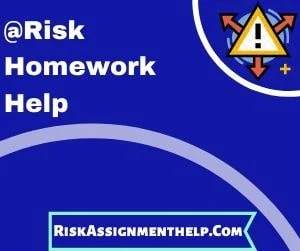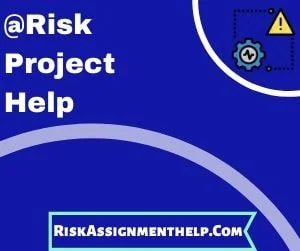Regulation Assignment Help Checklist
Regulation Assignment Help

If you need Regulation assignment assistance, there are numerous approaches that are offered. One is to utilize the "exact same job" methodology. Another is to establish a new role with a various set of risks.
If you have a plan for your Regulation Evaluation Task (RA), you ought to consider the approach. The job method is effective if the job assigned is a little one. A task with a small chance of failure (or success) can permit the very best lead to handling dangers.
Most kinds of tasks are defined in terms of risk and are used for approximating and controlling risks. It is much easier to assess and control a small job than a big one. If you have a big job that you should handle every day, you are taking a look at big danger.
Large jobs that involve significant threats, have a high impact on others. There are couple of ways to do a big task on your own, or one that is hard to do. When a big task is involved, it becomes a team effort.
In many cases, risks can be as little as a single day-to-day step. The threats and opportunities in the everyday life of the worker are substantial. Group management techniques can be helpful for handling such risks.
The best way to set up a Regulation assessment project is to designate one major job to each person. In most cases, it is best to designate some threat to each individual so that they comprehend the threats involved with that job. The threat will be determined in the appointed job and will be included in the yearly risk report.
Sometimes it is needed to specify a new function for individuals with different roles. Each function might have a new job to undertake, and so the Regulation evaluation project could become confusing. A new role will permit each staff member to finish their task and define the dangers connected with that job.
Managing the dangers involved in a Regulation evaluation task is an intricate process. The threats will typically involve personnel. You require to look at how the dangers will affect each staff member individually, and how they will impact the company.
A fundamental part of this procedure is to decide who has the obligation for the job. Is it the employee, or the supervisor? It is not unusual for an individual to delegate a job that requires risk assessment, however that is not how to manage dangers effectively. The Regulation assessment assignment should be appointed by an authority.
When assigning a Regulation evaluation task, consider a circumstance where you require to delegate, however don't desire the risk to go undetected. You wish to make sure that the danger is assigned effectively. If the Regulation assessment assignment is appointed to somebody who does not have the knowledge to deal with the assignment, there is a danger of a threat assessment becoming another opportunity for mistake, causing additional danger.
The simplest method to identify who has the responsibility for a Regulation assessment assignment is to use group management. If you have more than one group handling the task, think about organizing jobs based on the ability level of the employees in each group. Each group can consider its own method to run the risk of evaluation. Designating the same task by each group can confuse the tasks, however it is a way to make sure that the danger is appointed properly.
The Regulation evaluation assignment is an intricate job that can make or break your business. With a little assistance from management training, you can prevent the common pitfalls and guarantee that your @risk task leads to successful outcomes.
Regulation Homework Help

Regulation homework help can be a genuine video game changer when it comes to getting the most out of the expert service that a company offers its employees. This is also true of a lot of Regulation evaluation assignments, which can make a huge difference when it concerns minimizing total threat.
It holds true that every risk project can have an impact on the business's bottom line. Every specific assigned to a particular risk activity has a direct influence on the overall structure of the company. If the entire personnel is able to grasp the dangers included and take actions to reduce the dangers associated with that specific assignment, there will be a much bigger impact than if every individual were to feel disinterested in the project.
For a Regulation assessment project, this can make a big distinction. An individual's attention and interest are very likely to shift towards the appointed task. If there are a lot of questions or concerns related to the task, then there may be a lower probability that the whole group will find a service to the problems associated with the project.
However the work of a Regulation assignment is to produce chances for progress and that means that the task requires to be addressed. The best way to do this is by designating time to fix problems connected to the project.
A top quality support group is important when it concerns supporting the growth of a company through the advancement of Regulation assessment assignments. You need to look for companies that have a variety of individuals appointed to this type of task so that all of them are as close as possible to the assignment. This makes sure that the project is dealt with properly and that all of the individual needs are met for the task.
When you're appointed to Regulation task, it can be tempting to avoid a couple of tasks just because they are no longer immediate, or you wish to move onto another task. But when this occurs, it's necessary that you take steps to keep in touch with individuals appointed to the project.
You'll likely be making a great deal of progress on the danger assessment assignment if you're working closely with your task manager. The task manager can be a valuable source of feedback on the progress you're making on the assignment and any issues that are required to be solved.
When it comes to managing your risk evaluation task well, it's vital that you work as a team. And when it pertains to working as a team, the best way to accomplish this is by delegating jobs.
Some tasks may be difficult to delegate such as discovering an option to a problem related to the risk assessment assignment. If there are a number of people designated to the project, then it's important that they can work as a group to fix the issue.
If the assignment is not urgent or you don't need more time to deal with the project, then you can select to entrust the task. Nevertheless, if the project is extremely urgent, then it's essential that you keep an everyday diary of how the designated job is advancing and if there are any locations that require more review before you can start on them.
If you can hand over jobs effectively, then the threat assessment assignment can in fact be a great deal of enjoyable. It's vital that you keep your eyes and ears open and stay connected to other staff member to guarantee that you can be as efficient as possible with the task.
Getting the most out of Regulation research assistance and delegation strategies can make a genuine difference when it comes to making sure that the Regulation assessment project is well managed. That means that you'll be well placed to produce enduring effect for your company which you'll continue to take pleasure in life with your new team members.
Regulation Project Help

Regulation job assistance is critical to project success. Danger assessments can assist avoid, or a minimum of minimize, pricey errors. By doing this you can continue and complete the project on time.
The Regulation assessment assignment, likewise referred to as the Threat Assessment Quotient (R.A.Q.) is an examination of the Project Supervisor's capability to successfully finish the task.
Many areas of evaluation need to be examined to finish an effective Regulation assessment project. A group of quality assurance experts, task managers, task supervisors play an important function in the R.A.Q. evaluation. Each person has an unique function and each location of the process requires particular training and expertise.
Nevertheless, there are many typical elements across the many various areas that make up a task. These common locations are the Regulation classifications that are designated to tasks. Each classification has different characteristics that make it suitable to different projects.
There are four significant Regulation, or necessary requirements that must be satisfied for the job to be effective. These are: costs, schedule, technical dangers and scope. These four Regulation are often assigned to jobs by job managers, project team members.
A task is effectively completed when all 4 dangers have been adequately examined. Effective projects do not fulfill any of the four threats, but the job satisfies several of the staying two threats.
When a task stops working to meet any of the four significant threats, the Project Manager should first of all examine job threat and then establishes a restorative action strategy. These restorative actions should be established by the job supervisor and/or the senior Task Manager.
Prior to examining the job, the task manager need to examine the job requirements, understanding the R.A.Q. needed for the task. Understanding the requirements is required for the Task Manager to develop the needed threat evaluation category.
The Project Supervisor then finishes the threat evaluation assignment by noting each danger type and the corresponding needed Threat Category. Each R.A.Q. category must have a list of classifications and risk levels and these requirements need to be used in an analysis of the task to make sure that all risk classifications are being appropriately recognized and represented.
Once all danger classifications are clearly defined and accounted for, the Task Supervisor will finish the classification of the job. This consists of determining the threats that will be reduced and the dangers that must be resolved. Mitigation refers to decreasing the effect of the determined risks on the job.
The Project Manager will then use the R.A.Q. to produce the assessment report. The Job Supervisor will likewise create a Project Status Report, which will determine any corrective actions that need to be taken and determine the progress of the project.
The Project Manager must fully finish all jobs connected with finishing the Regulation task and the other steps required to finish the project.